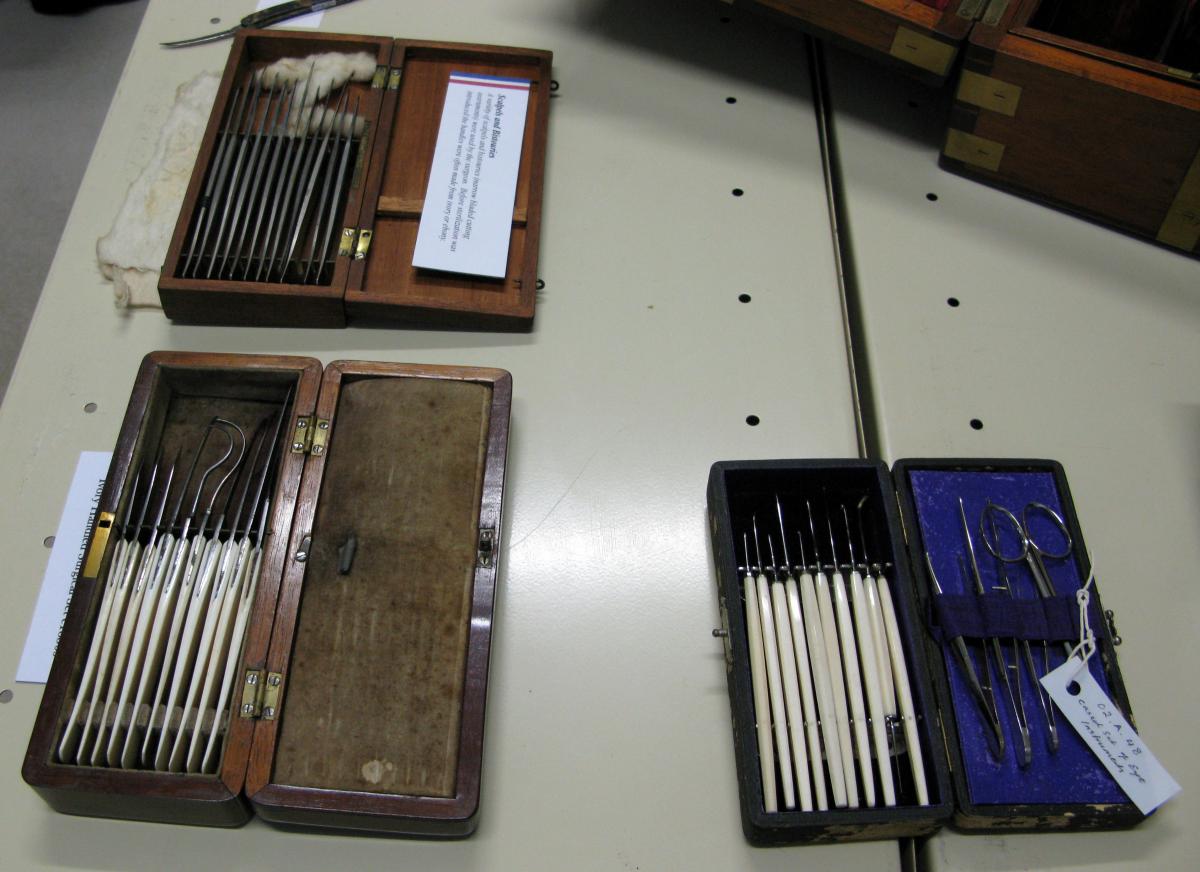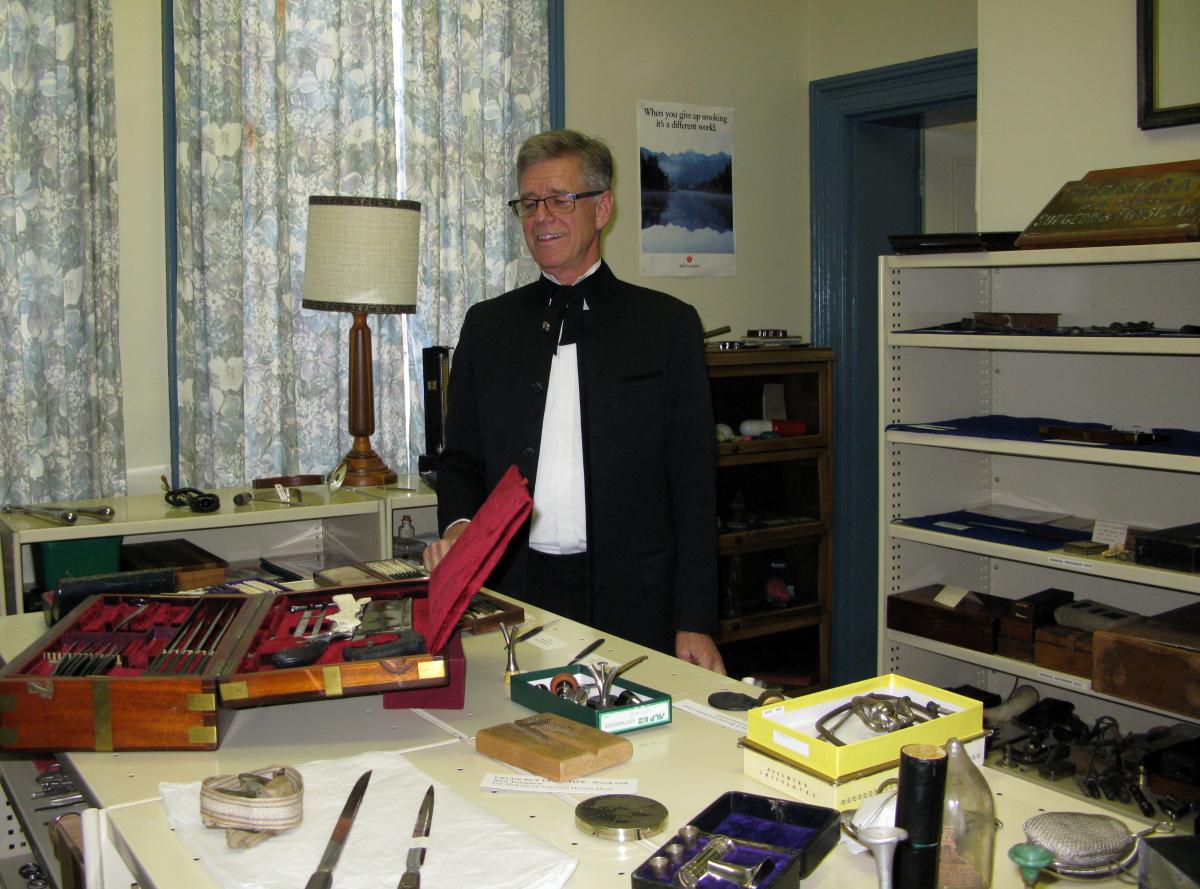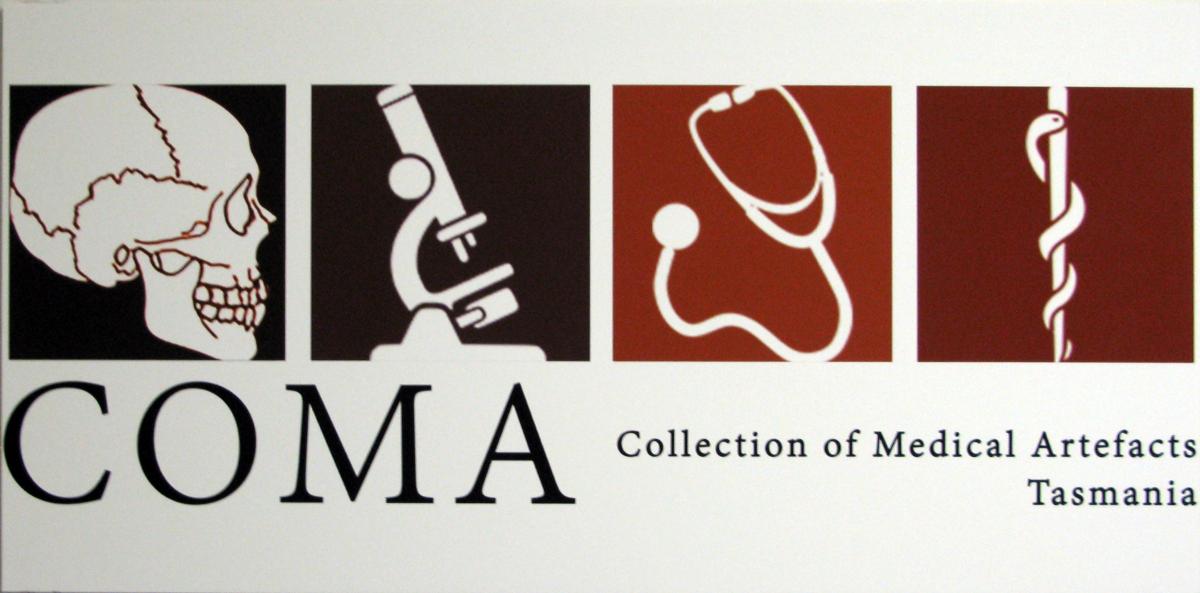On Friday the 25th May, members of the Tasmanian Division had a fascinating tour of the newly established Collection of Medical Artefacts (COMA) housed at the University of Tasmania’s residential college, Jane Franklin Hall.
Dr Philip Thomson collected the medical artefacts over a period of about 25 years following a Churchill Fellowship in 1995 visiting medical museums in America and the United Kingdom. Philip guided us through medical history with captivating stories. He outlined the development of surgery from amputations without anaesthetics in war time; the slow understanding of the cause of sepsis; the inventions of anaesthesia; vaccinations and immunisation; pathology and pharmacology. Philip illustrated these stories by showing us the objects used by medical practitioners going back to the mid-nineteenth century. Saws, knives, ivory-handled scalpels; pinard horns for foetal monitoring and early anaesthetic masks were on display. Some objects were home-made by GPs such as a baby monitor. There was a fierce-looking wet cupping set – the brass scarificator with lines of spring-loaded blades to puncture the flesh for bloodletting. We also had a discussion about the issues of displaying medicines now classed as toxic substances.

The collection has a part time Curator, Liz Bondfield, and Philip is keen to encourage new medical students to understand medical history as well as taking his stories to primary schools to engage the next generation. Philip looked very distinguished in his frock coat and cravat.

Following the tour of COMA we met for lunch and a meeting, welcoming new members Lisa Charleston, Conservation Technician at TMAG and Jennifer O’Connell, Senior Conservator (Painting) at TMAG.
